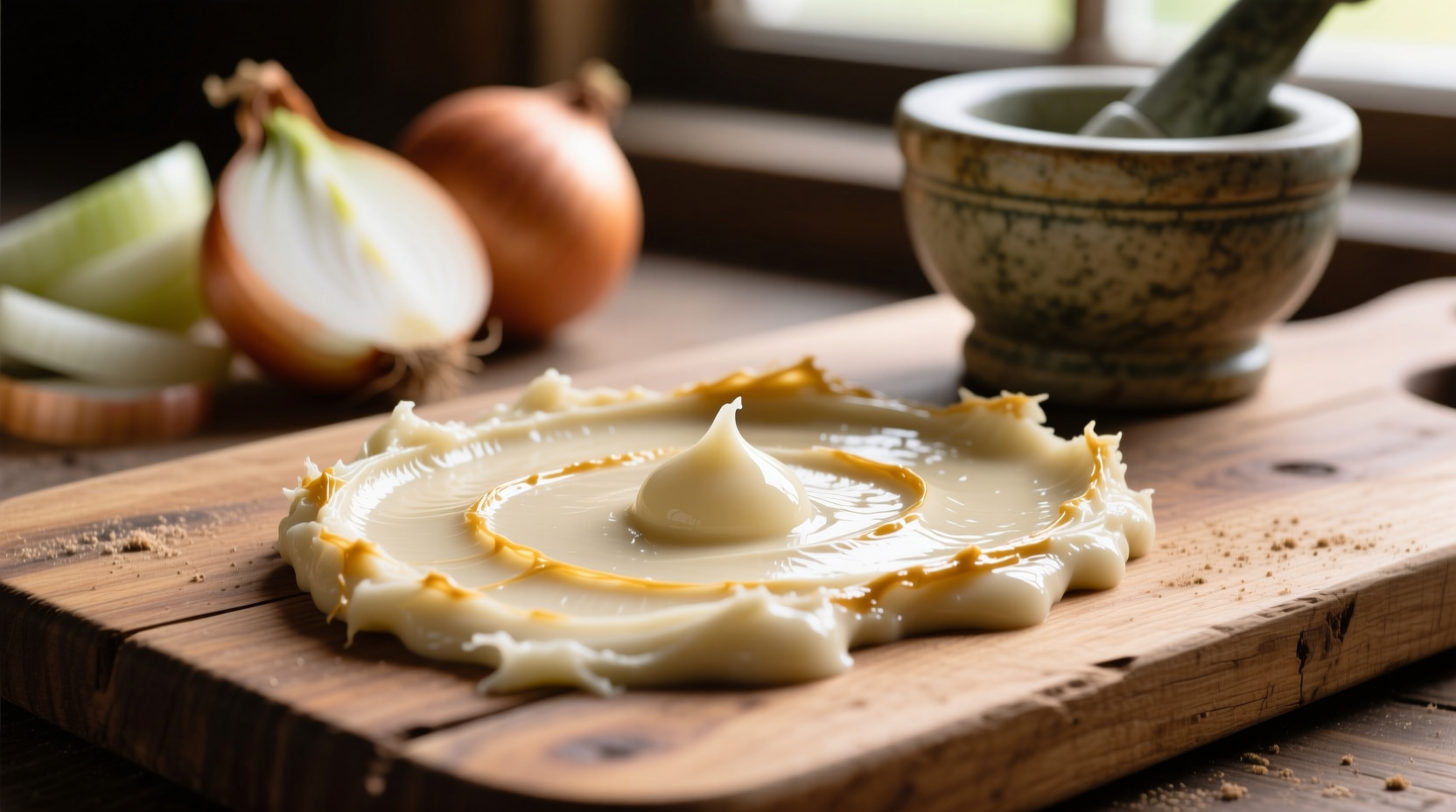The Secret Behind Vidalia's Sweet Magic
What sets Vidalia onion paste apart isn't just the preparation method, but the unique agricultural conditions that produce these legendary onions. Grown exclusively in 20 counties in southeastern Georgia, Vidalia onions benefit from the region's low-sulfur soil—a geological quirk that prevents the development of the pungent compounds found in regular onions.
| Characteristic | Vidalia Onion Paste | Regular Onion Paste |
|---|---|---|
| Sulfur Content | Very low (0.12% or less) | Higher (0.35% or more) |
| Natural Sugar Level | 12-15° Brix | 4-6° Brix |
| Aftertaste | Clean, sweet finish | Sharp, lingering bite |
| Geographical Protection | Federally protected (USDA) | No restrictions |
This distinctive flavor profile makes Vidalia onion paste particularly valuable for chefs seeking to add onion complexity without overwhelming other ingredients. Unlike regular onion paste which often requires cooking to mellow its sharpness, Vidalia paste can be used raw in dressings and dips while still delivering balanced flavor.
When Vidalia Paste Works Best (And When It Doesn't)
Understanding the appropriate culinary context prevents wasted ingredients and disappointing results. Vidalia onion paste shines in applications where its delicate sweetness enhances rather than competes with other flavors.
Ideal applications:
- Cold preparations like vinaigrettes and mayonnaise-based sauces
- Seafood dishes where harsh onion flavors would dominate
- Fine dining applications requiring subtle onion notes
- Raw vegetable dips and spreads
Limited value:
- Long-simmered stews and braises (regular onions develop better depth)
- Recipes requiring strong onion presence like French onion soup
- High-heat applications where sweetness may caramelize too quickly

From Field to Jar: The Vidalia Timeline
The journey from farm to paste reveals why this specialty product commands premium status:
- 1930s: Farmers in Toombs County, Georgia discover unusually sweet onions growing in local soil
- 1940s: Market vendors begin labeling these "Vidalia" onions after the town's annual spring festival
- 1986: Georgia state legislature establishes Vidalia as a trademarked product with protected growing region
- 2011: USDA grants federal marketing order with strict production standards
- Present: Vidalia onion paste emerges as a specialty product for chefs seeking consistent sweet onion flavor
According to the Vidalia Onion Committee, the paste must contain at least 85% Vidalia onions with no added sweeteners to carry the official certification. This regulation ensures consumers receive the authentic mild flavor profile that defines the product.
Practical Kitchen Applications
Maximize your Vidalia onion paste investment with these chef-tested techniques:
Perfect Pan Sauces in Minutes
Add 1-2 tablespoons to deglazed pan juices after searing proteins. The natural sugars help emulsify sauces while adding subtle sweetness that complements meat drippings without overpowering them. Works especially well with chicken, pork, and delicate fish.
Revolutionize Your Salad Dressings
Replace raw minced onion in vinaigrettes with Vidalia paste at a 1:1 ratio. You'll get consistent onion flavor without the textural distraction of onion pieces. Try this simple formula:
- 3 parts extra virgin olive oil
- 1 part vinegar or citrus juice
- 1 teaspoon Vidalia onion paste
- 1/4 teaspoon Dijon mustard
- Salt and pepper to taste
Marinade Magic
The paste's smooth texture allows it to penetrate proteins more effectively than chunky onions. Combine with olive oil, garlic paste, and herbs for a marinade that tenderizes without the sharp aftertaste of regular onions. Particularly effective for:
- Grilled shrimp (30 minutes maximum)
- Pork tenderloin (2-4 hours)
- Vegetable kebabs (1-2 hours)
Homemade vs. Store-Bought: What You Need to Know
While commercial Vidalia onion paste offers convenience, making your own provides freshness and customization. Here's how to decide which option serves your needs best:
Homemade advantages:
- Control over texture (smooth vs. slightly chunky)
- No preservatives or stabilizers
- Peak seasonal flavor when Vidalias are in harvest (April-June)
Store-bought advantages:
- Year-round availability
- Consistent flavor profile
- Time savings for busy cooks
To make your own, simply blend 2 cups chopped Vidalia onions with 1 tablespoon olive oil and a pinch of salt until smooth. For longer storage, vacuum seal and freeze in tablespoon portions—this National Center for Home Food Preservation technique maintains quality for up to 6 months.
Three Simple Recipes to Showcase Vidalia Paste
1. Vidalia Onion Aioli (5 minutes)
Combine 1/2 cup mayonnaise, 2 tablespoons Vidalia onion paste, 1 minced garlic clove, 1 teaspoon lemon juice, and salt to taste. Perfect for sandwiches, seafood, or as a vegetable dip. The paste eliminates the raw garlic bite while adding subtle sweetness.
2. Spring Vegetable Risotto (30 minutes)
Stir 1 tablespoon Vidalia paste into your risotto during the last 5 minutes of cooking. The natural sugars enhance the asparagus and peas without competing with the delicate arborio rice flavor. Finish with lemon zest and fresh herbs.
3. Honey-Vidalia Glazed Salmon (20 minutes)
Mix 2 tablespoons Vidalia paste with 1 tablespoon honey, 1 tablespoon soy sauce, and 1 teaspoon grated ginger. Brush onto salmon fillets during the last 8 minutes of baking. The low sulfur content prevents the unpleasant sulfur compounds that sometimes form when regular onions meet fish.











 浙公网安备
33010002000092号
浙公网安备
33010002000092号 浙B2-20120091-4
浙B2-20120091-4